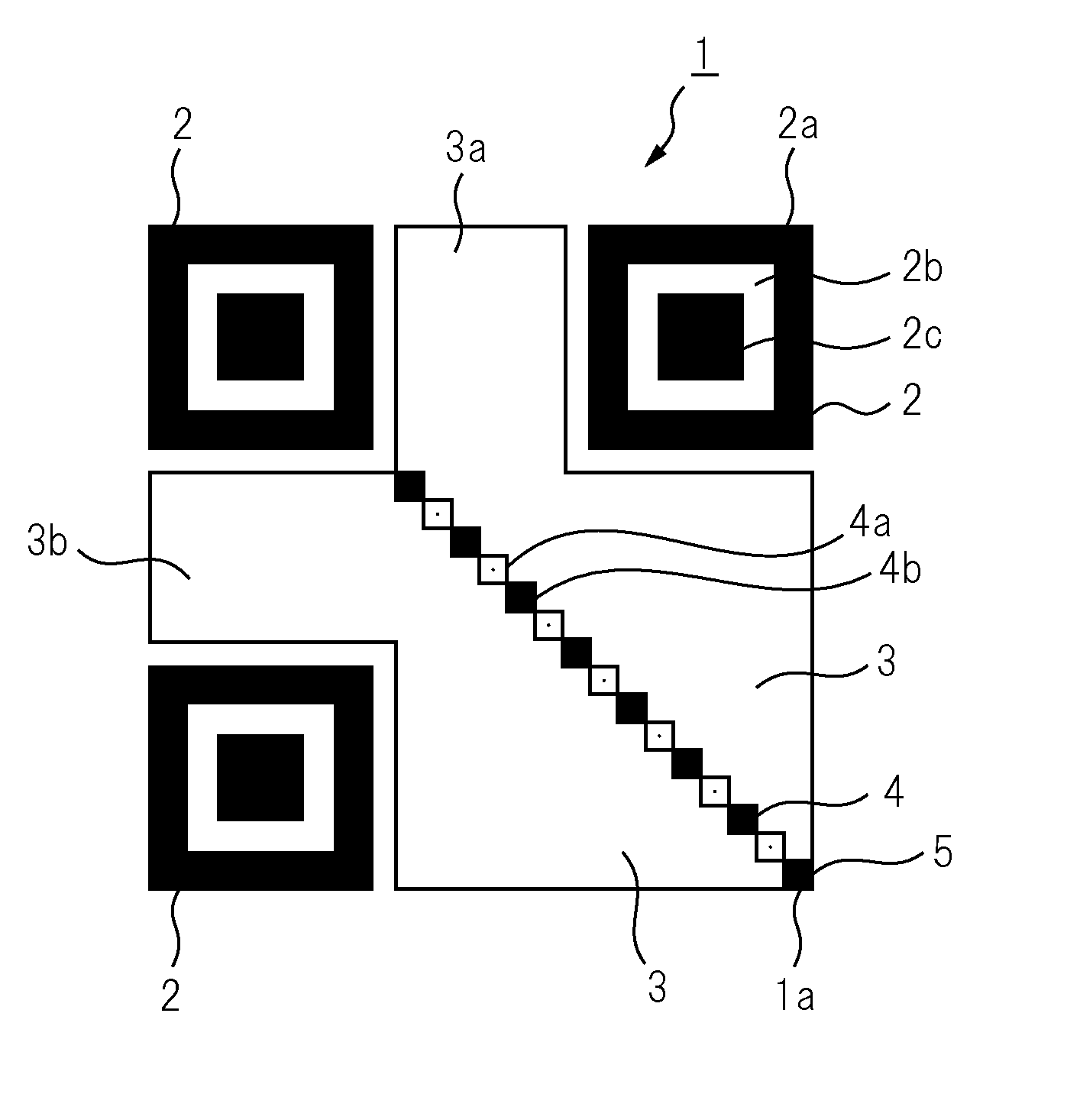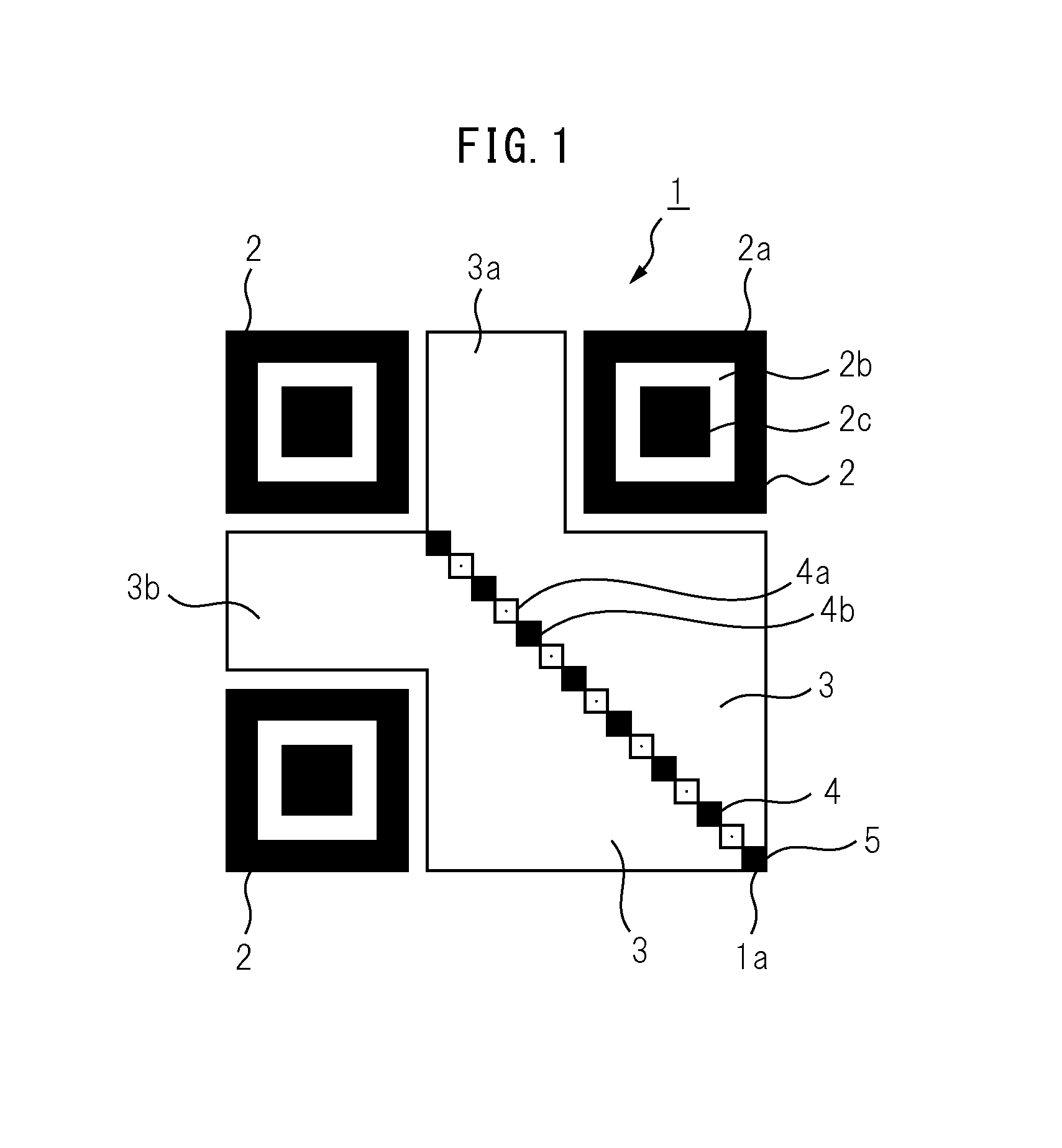Two-dimensional code
a two-dimensional code and code technology, applied in the field of two-dimensional codes, can solve the problems of inconvenient analysis of images projected on screens, inability to recognize parts of images, and distortion of images, blurriness and the like, etc., and achieve the effects of accurate analysis, short time, and increased analysis tim
- Summary
- Abstract
- Description
- Claims
- Application Information
AI Technical Summary
Benefits of technology
Problems solved by technology
Method used
Image
Examples
first embodiment
[0092]FIG. 2 illustrates a two-dimensional code according to the
[0093]The two-dimensional code of the first embodiment has a size of 35×35 cells and is divided into 9×9 blocks, with a one-cell light separation space 23 being arranged between adjacent blocks. Accordingly, the separation space is an 8×8, one-cell-width lattice pattern having grids at block-size intervals. A first position detection pattern 12A is arranged in the part of the lower right 3×3 block and 3×3 separation space; a second position detection pattern 12D is arranged in the part of the upper left 2×2 block and 2×2 separation space; a third position detection pattern 12B is arranged in the part of the upper right 3 (lateral)×2 (vertical) block and 3×2 separation space; and a fourth position detection pattern 12C is arranged in the part of the lower left 2 (lateral)×3 (vertical) block and 2×3 separation space. Accordingly, in the two-dimensional code, no pattern other than the first to the fourth position detection...
second embodiment
[0152]FIG. 10 illustrates an example of a two-dimensional code generated in accordance with the two-dimensional code of the
[0153]FIG. 10(A) illustrates a 8×8 block two-dimensional code having 36×36 cells. The two-dimensional code of FIG. 10(A) contains a rectangular design region having diagonal corners at block coordinates of (2,2) and (5,5), in which design region a high-resolution multi-valued image is placed. This enables the two-dimensional code to have an improved impression and to draw attention.
[0154]FIG. 10(B) illustrates a 8×8 block two-dimensional code having 36×36 cells. The two-dimensional code of FIG. 10(B) contains a rectangular design region having diagonal corners at block coordinates of (2,3) and (5,4), in which design region an image of numbers is placed.
[0155]There are various sizes and forms of two-dimensional codes and any of them can be applied to the two-dimensional code of the present invention.
[0156]FIG. 11 illustrates modification examples in which the pos...
PUM
 Login to View More
Login to View More Abstract
Description
Claims
Application Information
 Login to View More
Login to View More - R&D
- Intellectual Property
- Life Sciences
- Materials
- Tech Scout
- Unparalleled Data Quality
- Higher Quality Content
- 60% Fewer Hallucinations
Browse by: Latest US Patents, China's latest patents, Technical Efficacy Thesaurus, Application Domain, Technology Topic, Popular Technical Reports.
© 2025 PatSnap. All rights reserved.Legal|Privacy policy|Modern Slavery Act Transparency Statement|Sitemap|About US| Contact US: help@patsnap.com



